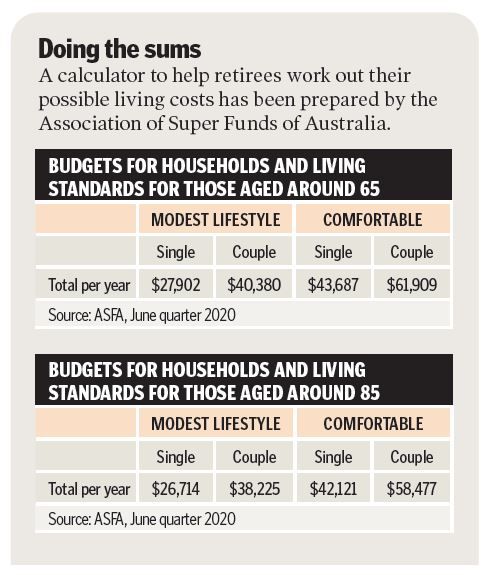How downsizing the family home can help boost your super balance
By Vita Palestrant
One of the more positive superannuation rule changes introduced in recent years allows older Australians to make a non-concessional downsizer contribution of up to $300,00 each, or $600,000 as a couple, from the proceeds of selling the family home.
In today's difficult investment environment, releasing equity built up in the home to boost retirement savings may be a worthwhile strategy for some people.
The downsizer contribution was introduced in July 2018 as a means of reducing pressure on housing affordability. The measure is intended to encourage retirees to downsize from homes that no longer meet their needs and free them up for younger families.
It has made it easier for older Australians who haven't had the benefit of compulsory super all their working lives to lift their super balance. Existing contribution caps and restrictions do not apply to
the downsizer contribution.
How it works
You have to be 65 or older at the time of making the downsizer contribution and you need to make it within 90 days of receiving the proceeds of the sale, which is usually at the date of settlement. The contribution can't exceed the sale price.
You, or your spouse, must have owned the property for at least 10 years leading up to the sale of the property. You can each make a downsizer contribution even if your spouse is not on the title of the home.
The contribution does not count towards either concessional (before tax) or non-concessional (after tax) contribution caps.
"It's a means of putting more capital into your fund rather than having it sitting outside of super exposed to a higher tax rate," says Andrew Yee, a director of superannuation for HLB Mann Judd.
No work test or age limits apply. The downsizer contribution isn't subject to the $1.6 million total super balance restriction. Normally you can't make a non-concessional contribution to your super fund if your balance is $1.6 million.
"Usually when a person is capped out - has $1.6 million - they can't put any more non-concessional contributions into super. With the downsizer contribution they can still make that contribution on top of the $1.6 million," says Yee.
"That's why it's different; it's less strict than other super contributions. Once you are over 65 and meet the test of ownership, there's no restrictions on contribution except for the amount. It's a free hit for the elderly. If you are in pension mode you can add it to your existing pension provided you're under $1.6 million. You can have $1.3 million in pension mode and then top it up with $300,000."
However, if you've already reached the $1.6 million transfer balance cap, then the $300,000 has to go into your accumulation account, where a tax of 15% will apply on earnings. Once you've gone into pension mode with $1.6 million, that's it. You can't top it up.
"You can't wind it back. It's set in stone."
Yee says the paperwork is straightforward. "There's a form that you fill in and give to your super fund. The fund has it on their file and they report that to the ATO."
Finally, he says you need to weigh up the pros and cons of the strategy. "Is it better to maintain the family home for its tax-free status from an inheritance point of view or to put more money into super where adult children will be taxed. Your home is capital gains tax free so you may be better off not selling it."
And if you already have more than $1.6 million in pension mode, earnings on the whole downsizer contribution will be taxed at 15% in an accumulation account. "It depends how much you have outside of super. At that stage of your life you might not be earning that much and paying less than 15% tax or even 0% tax," says Yee.
Furthermore, the downsizer contribution is not exempt from the age pension means test. If you are getting a full or part age pension you should check how it will affect your payments and other benefits.
"Obviously, you need to seek professional advice before you jump ahead," advises Yee.
Upsizing your super balance doesn't mean you have to downsize your property.
Once you have sold your home you are not obliged to buy a less expensive home - or even buy a home at all. The only rule is you can only claim the downsizer contribution once.
Depending on your circumstances you may be able to afford a more expensive property.
"You don't actually need to downsize; you can upsize if you want to," says Yee. "So long as you've sold the house, that's all that's counts when it comes to the downsizer contribution."
As an example, take Mary and Matthew, both in their early 70s. They have a spare $1.5 million sitting in cash after the sale of an investment property. They sell their home for $1.7 million and make a combined downsizer non-concessional contribution of $600,000 to their super funds.
They then use their spare cash and what is left over from the sale of their home, after the downsizer contributions, to buy another property in a better area.
So if you have the financial means you could use the downsizer strategy to not only give your super balance a healthy boost but also trade up to a more expensive home.
Before embarking on this strategy, get good professional advice. And do the maths beforehand to take all transaction costs into account to see if it stacks up: agent fees, conveyancing costs, stamp duty and relocation expenses.
Plan B: just sell part of your home
The tax office recently ruled that the one-time downsizer contribution can also come from selling some of the equity in your home.
It works like this: you sell part of the equity in your home to a fractional property investor, via the investment platform DomaCom, in return for a lump sum or staggered payments. A 4.4% service fee is charged, which is split between the investor and the
platform.
As the homeowner you are essentially liquidating part of your house into cash. The outside investor then owns the equity and receives yield from it through the service fee as well as a proportional share of any capital gains should the house be sold down the road.
Get stories like this in our newsletters.




